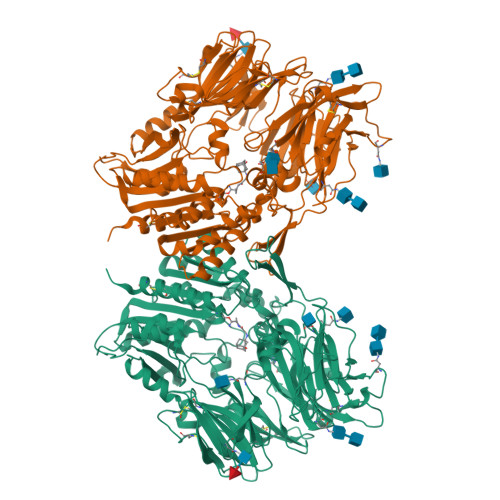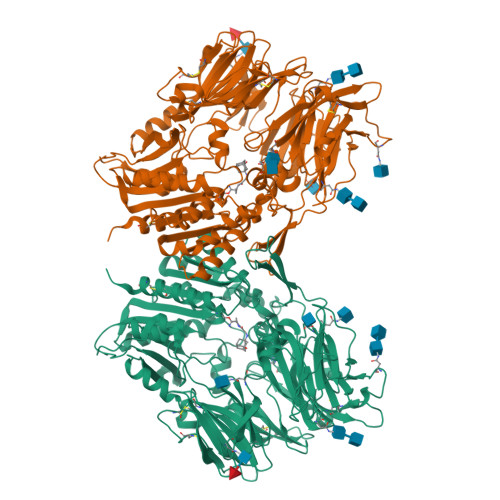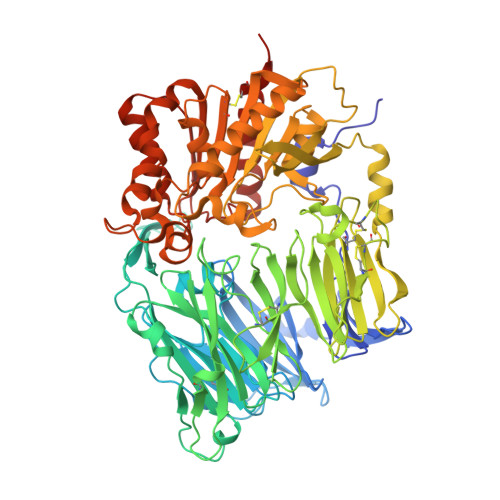A comparative study of the binding modes of recently launched dipeptidyl peptidase IV inhibitors in the active site
Nabeno, M., Akahoshi, F., Kishida, H., Miyaguchi, I., Tanaka, Y., Ishii, S., Kadowaki, T.(2013) Biochem Biophys Res Commun 434: 191-196
- PubMed: 23501107
- DOI: https://doi.org/10.1016/j.bbrc.2013.03.010
- Primary Citation of Related Structures:
3W2T - PubMed Abstract:
In recent years, various dipeptidyl peptidase IV (DPP-4) inhibitors have been released as therapeutic drugs for type 2 diabetes in many countries. In spite of their diverse chemical structures, no comparative studies of their binding modes in the active site of DPP-4 have been disclosed. We determined the co-crystal structure of vildagliptin with DPP-4 by X-ray crystallography and compared the binding modes of six launched inhibitors in DPP-4. The inhibitors were categorized into three classes on the basis of their binding subsites: (i) vildagliptin and saxagliptin (Class 1) form interactions with the core S1 and S2 subsites and a covalent bond with Ser630 in the catalytic triad; (ii) alogliptin and linagliptin (Class 2) form interactions with the S1' and/or S2' subsites in addition to the S1 and S2 subsites; and (iii) sitagliptin and teneligliptin (Class 3) form interactions with the S1, S2 and S2 extensive subsites. The present study revealed that the additional interactions with the S1', S2' or S2 extensive subsite may increase DPP-4 inhibition beyond the level afforded by the fundamental interactions with the S1 and S2 subsites and are more effective than forming a covalent bond with Ser630.
Organizational Affiliation:
Medicinal Chemistry Research Laboratories II, Mitsubishi Tanabe Pharma Corporation, Saitama, Japan. nabeno.mika@mv.mt-pharma.co.jp























